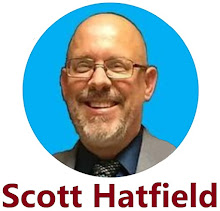Well, it has come to this at last. As you may be aware, I am planning on taking coursework in the Galapagos Islands in July. This is part of a program in which I will earn units in both the Geology and Biology of the Galapagos. Beyond making what is in effect the biological equivalent of a pilgrimage, I am hoping that what I see and experience will make me a more effective instructor in Biology, particularly as regarding evolution and natural selection.
I don't intend to stop there, however. I want to be able to document my voyage of discovery and bring into the classroom---not just my own future classes, but to the Central Valley as a whole. As you may be aware, where I teach is not exactly the most progressive place in these United States, and (despite pretty fair standards and the presence of NCSE up in Oakland) evolution education in my own County is pretty woeful.

to exotic locations!
Isolating mechanisms, changing environments, patterns of selection and diversification are going on throughout the world, including the Central Valley. I want to bring an awareness of what's happening right here to my students, so that they can see evolution at work in their parks, their orchards, their forests and even their urban settings.
What , for example, could possibly be more motivating to students that to learn that real-life examples of natural selection in action are be studied just a few miles away from where I teach, in Millerton Lake?

Outstanding research by David Kingsley and his associates has documented how genetic changes in stickleback fish in different environments have led to recent speciation events in populations that became isolated when global sea levels fell during the last Ice Age. Placed in refugia that lacked the predators experienced by marine populations, the pressures to maintain the dorsal spines that give these fish their name was relaxed, and the energetic costs of maintaining these spines asserted themselves.
That's the sort of connection I want to help foster, but to make that connection especially vivid we need to relate our surroundings to the familiar example of the Galapagos, the "workshop of Nature" found in our textbooks. Doing that means creating specific content, hopefully vivid and memorable, that brings the Galapagos to the Valley---so that we can then discover the connection, in effect Finding OUR Galapagos.
That, at least, is my vision. But, I have to confess, I am going to need to some help. The expenses associated with this venture go well beyond what most individuals, including public school teachers, can easily meet out of pocket. Stepping up and making the commitment to further my education as a science teacher has been a significant investment undertaken without any institutional support, and since beginning this effort I have encountered significant unexpected expenses. To do this thing right, with the highest quality, is going to require additional support.
I am therefore asking people to contribute by clicking on the PayPal button on the sidebar of this blog, or on the blog Finding OUR Galapagos. This will allow you to make a donation to this effort. No contribution is too small to assist my colleagues and I, and you can believe me when I say that it will be well-spent, bringing high-quality science education to biology students in the Central Valley.
Thank you, in advance, for helping out as you are able.



